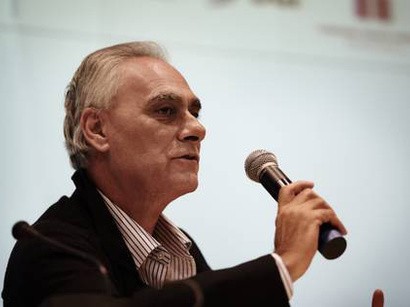
By Waleed R. Derhem
Ten days into the beginning of “Decisive Storm”, and we are still divided on who are the good guys and who are the bad guys. Led by Saudi Arabia, the coalition forces continue to strike the military facilities and the strategic locations under the control of the Houthis, and will continue to do so until they restore the legitimacy of President Hadi.
The situation on the ground is horrific, the death toll is rising drastically, and many areas are in need of humanitarian aid that be cannot accessed under bombardment. The coalition has “mistakenly” targeted a UNHCR refugee camp near the northern borders of Yemen with Saudi Arabia, and a few days later, they bombed a factory facility down south in the province of Lahj. This proves that, no matter how precise and clinical these strikes are, the civilians’ livelihood is under threat. Almost all international organisations and embassies have shut their doors and evacuated their staff, and right now foreign workers continue to flee the country through the port of Aden as the Houthis intensified their bombardments to capture Hadi’s interim capital.
Supporters of President Hadi have been fighting a ferocious battle against the Houthi allies in different districts of Aden, turning it into a war-zone where bodies litter the street-sides and hospitals are packed with civilian casualties. The battle for Aden will continue so long as the supply lines of the Houthis are not cut from the north. However, to counterbalance the situation, Saudi warplanes dropped ammunition to Hadi supporters to prevent the Houthis from seizing the city. This will further stretch the war and worsen the humanitarian situation, as food and water are becoming scarce. A third player in this chaos is the tribe that has played a major role in determining the results of the ongoing battles between the two sides. The tribal coalition of Mareb has been blocking the Houthis from advancing down south through their oil-rich province, while in recent updates the tribal coalition of Hadhramaut, are mobilising forces to fight Al-Qaeda, which has seized the city of Mukalla and freed more than 300 prisoners, complicating the situation even further.
Trying to evaluate the current situation is a difficult task, as we get two versions of each story, and therefore get lost in the middle of media biases. Families and even friends are divided on who’s to blame for this mess. Friends from Aden or “Anti-Houthis” praise the Saudi-led military intervention, while friends in Sana’a or “pro-Houthis” condemn the intervention and believe it’s a clear breach of Yemen’s sovereignty. However some, like myself, finds themselves trapped in between the woes of military intervention and the disaster brought by the Houthi military campaign.
If I may present my point of view, I would say that this intervention by the Saudi-led coalition is politically and morally wrong. Why wrong? The basis of intervention purely serves the interests of the coalition, namely the security of the Gulf and the Suez Canal. The Houthis seized the capital Sana’a back on 21 September 2014. Therefore, justifying the intervention on the basis of restoring the legitimacy of Hadi is not a strong argument. However when the Houthis mobilised forces down south towards the province of Taiz, which is considered the gate to southern provinces, and were closed from controlling the strategic strait of Bab AlMandab, Saudi Arabia struck hard. Stakes were high as Houthis were advancing, and Saudi Arabia had no option but to intervene militarily after several UN-sponsored talks and resolutions that were all ignored by the Houthis.
I still maintain my point on the wrongfulness of the intervention, as it will further widen the gap between the two conflicting factions in Yemen and will destroy the limited hopes of mediation. This intervention will further polarise the region and ultimately drag the Middle East into a sectarian war between the Sunnis and the Shi’as. To further elaborate, I would claim that the military intervention by the Saudi-led Coalition to restore Hadi’s legitimacy, or the strategic support by Iran to strengthen the Houthi movement in the north, presented a sectarian angle to a purely political conflict.
Yemen has yet turned into another battleground for the Sunni-Shi’a hegemonies, while internally it seems that sectarianism has found a fertile soil in pretty fragmented society, and therefore will further flourish to set the divide of Yemen. This is portrayed in the hate-speech exchanged between the two conflicting factions all over Facebook and in different social networks. The Yemeni identity was shattered by the intervention, minimising the identity of the Yemenis killed to either “Houthi” or a “Daeshi”, thus fostering the claims of probable division of Yemen as an aftermath of this intervention. Right now the consequences of this intervention are still unknown, but one can claim that even if the coalition achieves its goal in demolishing the military power of the Houthis, the latter will thrive as an ideology and further cement the sectarian divide that never existed in Yemen before.
As Decisive Storm continues, bloodstreams run north and south, nourishing hatred among the two factions and setting the division of the Yemeni identity on a sectarian basis. Thus, one needs to reflect whether it is a “Decisive Storm” or a “Divisive Storm”.
Waleed R. Derhem is a Yemeni graduate student in the Joint MA Program between the AUC Department of Political Science and the University of Tübingen in Germany.



